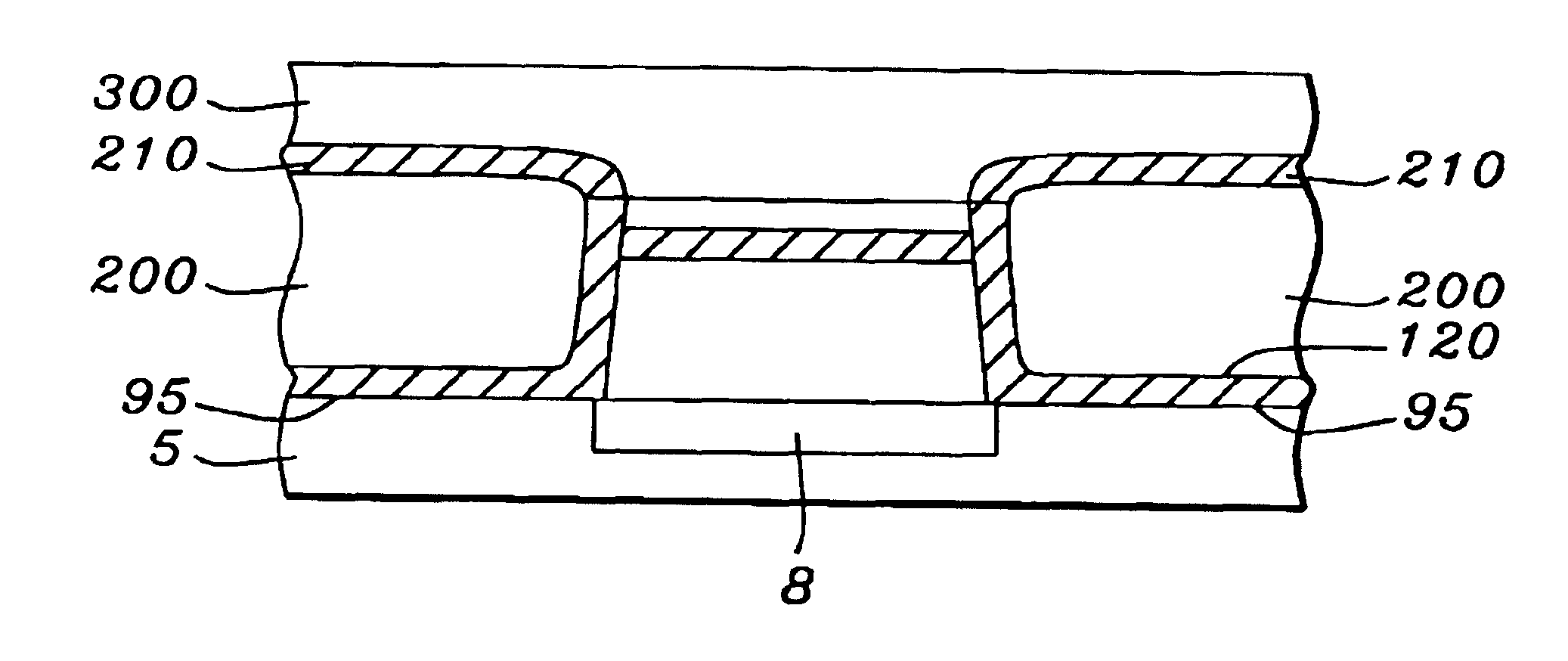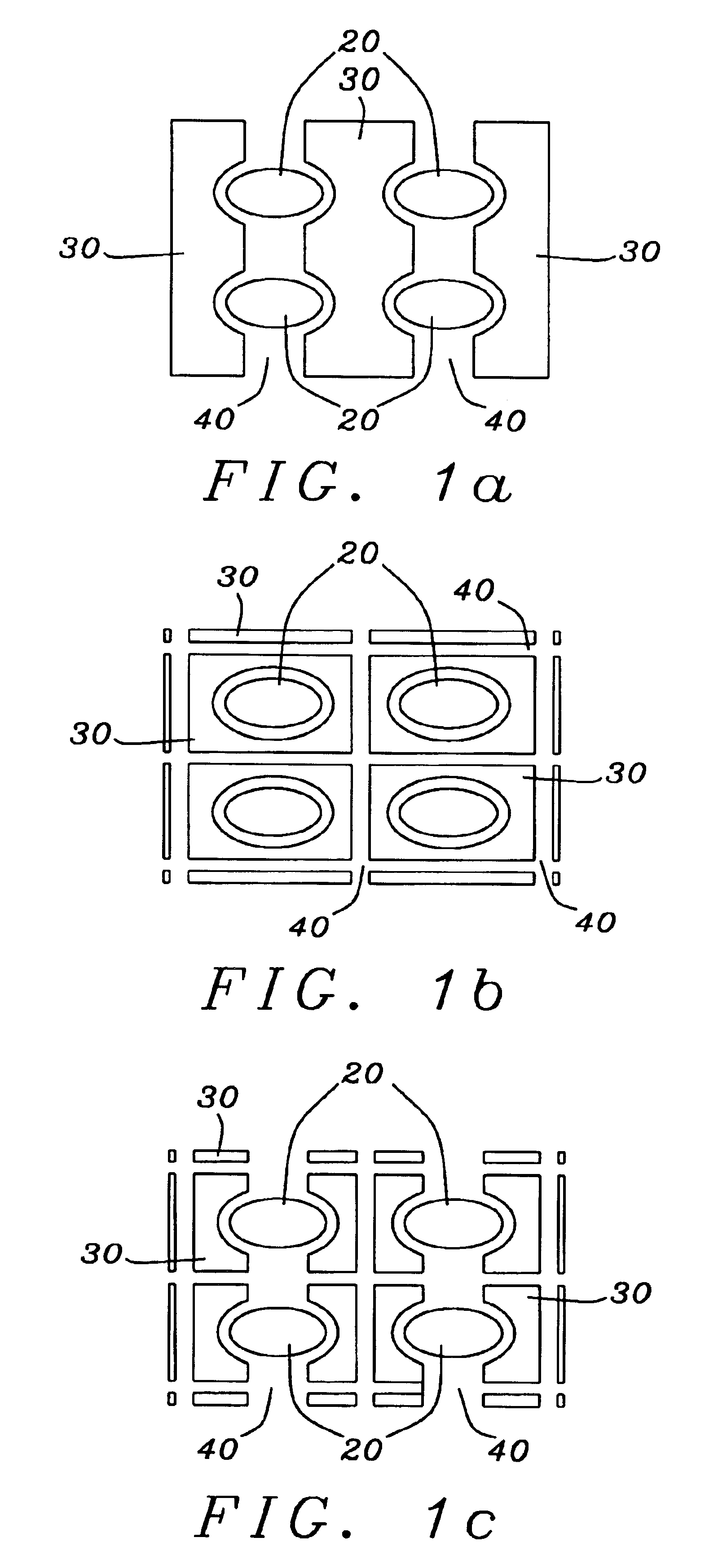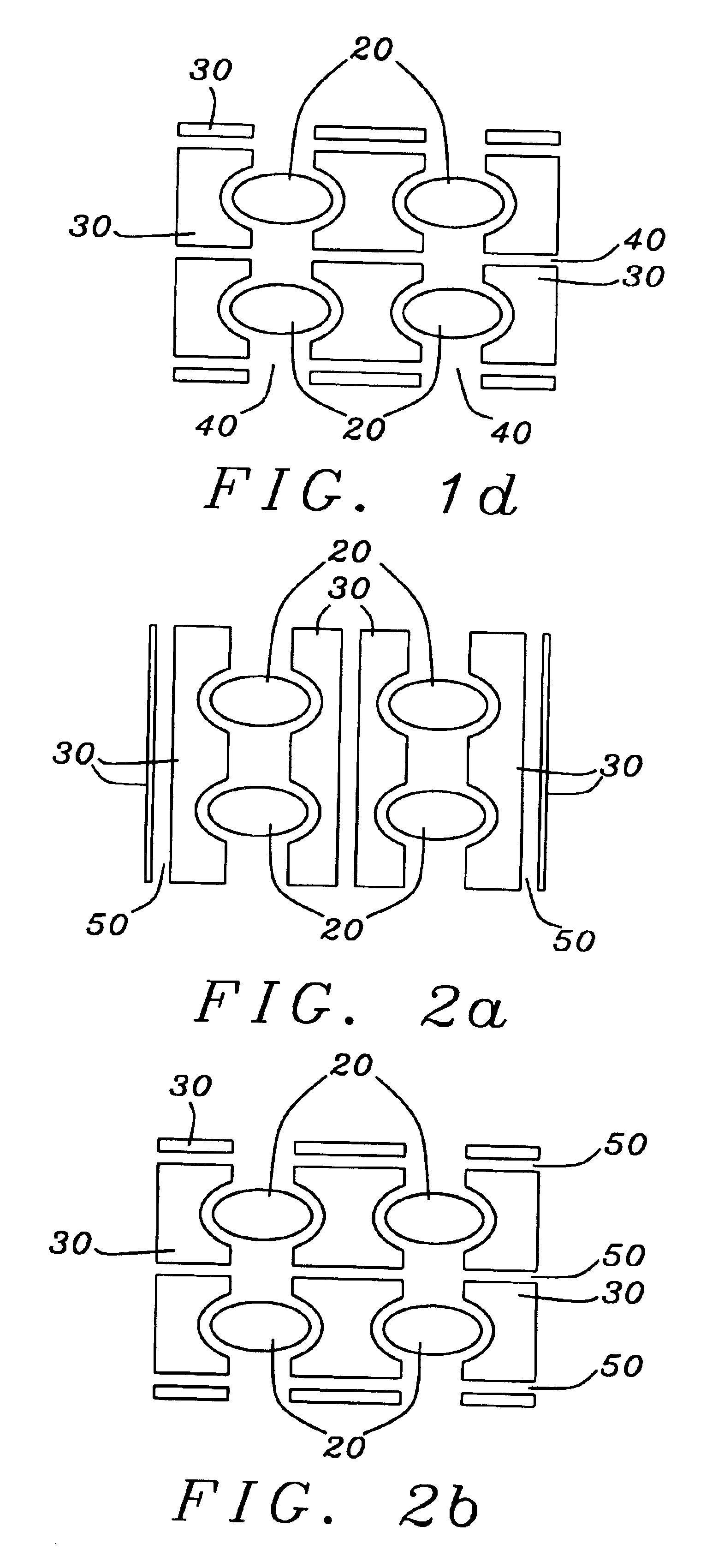Magnetic random access memory designs with patterned and stabilized magnetic shields
a random access and memory design technology, applied in the field of magnetic tunnel junctions, can solve the problems of adverse effect on the storage and reading of data, uncontrollable edge-fields, and large size associations, and achieve the effects of reducing edge effects, small, but non-zero, magnetic moment, and reducing probability
- Summary
- Abstract
- Description
- Claims
- Application Information
AI Technical Summary
Benefits of technology
Problems solved by technology
Method used
Image
Examples
Embodiment Construction
[0024]The preferred embodiment of the present invention teaches a method of forming a shielded MRAM array of MTJ cells, said cells being substantially surrounded by and electrically insulated from a formation of ferromagnetic magnetic shields which conform to the shape of the MTJ cells and which may be stabilized by the formation of additional layers of antiferromagnetic and permanent magnetic materials. The magnetic shields compensate magnetic poles which would ordinarily form at the edges of the MTJ cells and shield the cells from undesired magnetic fields.
[0025]Referring first to FIGS. 1a-1d, there is shown schematic overhead diagrams of an array of elliptical MTJ cells (20) surrounded by different shield (30) and gap (40) patterns. Any of these designs would meet the objects of the present invention and it is clear that other patterns may be equally appropriate if they satisfy the design criteria. The choice of MTJ cells which are substantially identical in their size and ellipt...
PUM
| Property | Measurement | Unit |
|---|---|---|
| thickness | aaaaa | aaaaa |
| thickness | aaaaa | aaaaa |
| thickness | aaaaa | aaaaa |
Abstract
Description
Claims
Application Information
 Login to View More
Login to View More - R&D
- Intellectual Property
- Life Sciences
- Materials
- Tech Scout
- Unparalleled Data Quality
- Higher Quality Content
- 60% Fewer Hallucinations
Browse by: Latest US Patents, China's latest patents, Technical Efficacy Thesaurus, Application Domain, Technology Topic, Popular Technical Reports.
© 2025 PatSnap. All rights reserved.Legal|Privacy policy|Modern Slavery Act Transparency Statement|Sitemap|About US| Contact US: help@patsnap.com



